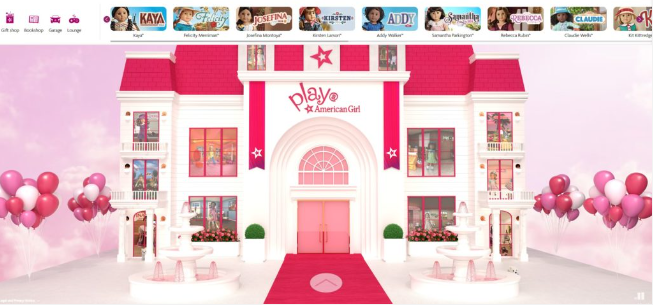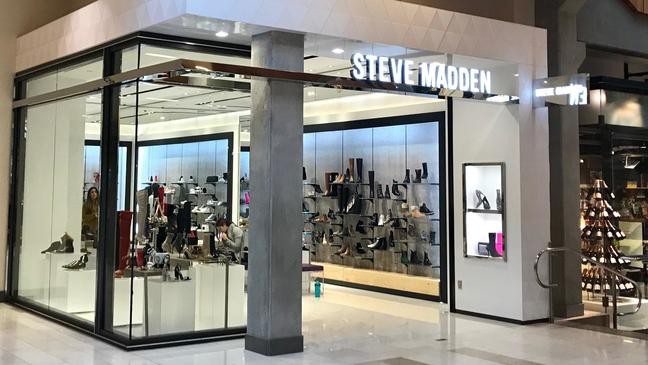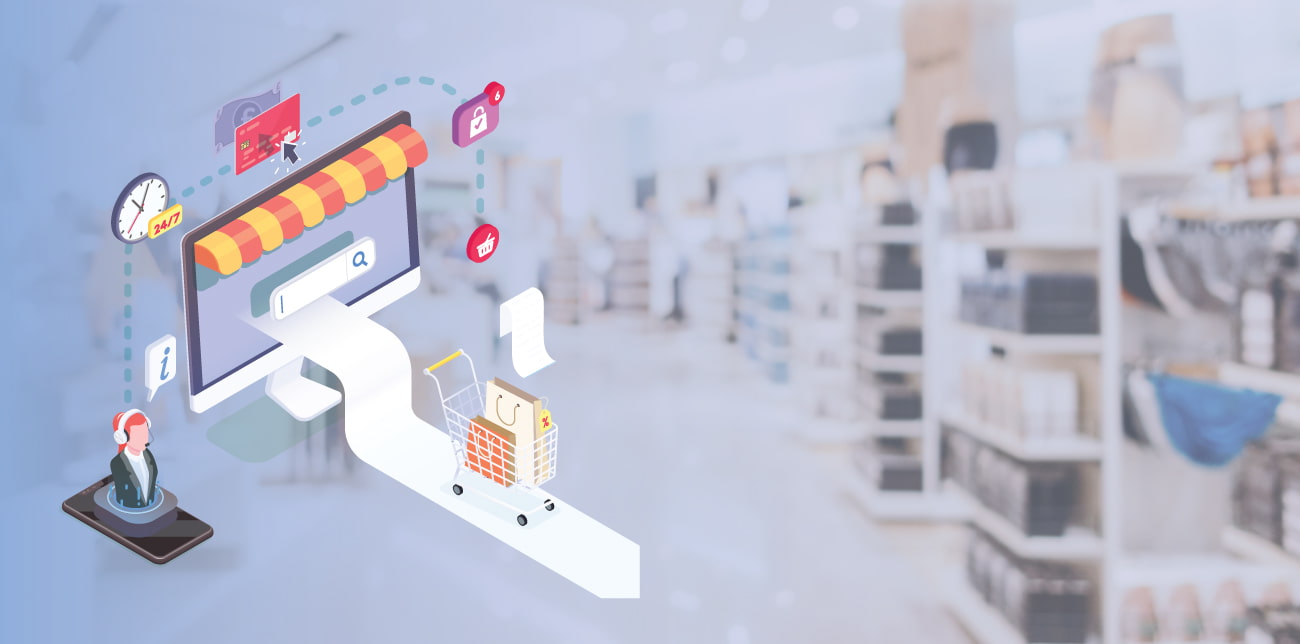Whether you’re looking at in-person customers who did research online before they came into the store or online customers who are shopping after receiving an SMS message about a sale, there’s a good chance that you already deal with omnichannel customer engagement. Harvard Business Review discovered that 73% of customers prefer shopping through multiple channels rather than one. Looking at the best omnichannel retailers can give your brand valuable insights into techniques and strategies to level up your omnichannel customer engagement.
Let’s look at the 20 best omnichannel retailers and what you can learn from the strategies they employ.
Table of Contents
- > Why omnichannel is significant for the retail industry
- > The best examples of omnichannel retailers to follow
- > Omnichannel Retailer #1: Sephora
- > Omnichannel Retailer #2: Best Buy
- > Omnichannel Retailer #3: Target
- > Omnichannel Retailer #4: Starbucks
- > Omnichannel Retailer #5: Disney
- > Omnichannel Retailer #6: American Girl
- > Omnichannel Retailer #7: Home Depot
- > Omnichannel Retailer #8: Nordstrom
- > Omnichannel Retailer #9: Walgreens
- > Omnichannel Retailer #10: Neiman Marcus
- > Omnichannel Retailer #11: The Finish Line
- > Omnichannel Retailer #12: Container Store
- > Omnichannel retailer #13: Stitch Fix
- > Omnichannel retailer #14: YNAB
- > Omnichannel retailer #15: Chipotle
- > Omnichannel retailer #16: GameStop
- > Omnichannel retailer #17: IKEA
- > Omnichannel retailer #18: Crayola
- > Omnichannel retailer #19: Macy’s
- > Omnichannel retailer #20: Steve Madden
- > Everybody goes omnichannel. Will you?
Why omnichannel is significant for the retail industry
Retail companies that get omnichannel customer engagement right outpace their competitors. Research shows that brands with outstanding omnichannel engagement strategies retain about 89% of their customers, compared to an average 33% retention rate for brands that don’t focus on omnichannel best practices.
The best examples of omnichannel retailers to follow
From the best omnichannel retailers, we’ve compiled a list of 20 exceptional examples worth paying attention to. For each of these top omnichannel researchers, we’ve outlined exactly how they’re implementing omnichannel customer engagement into their business practices. The goal isn’t to mimic these retailers entirely. Instead, consider how you might be able to implement a similar idea in a way that would work with your brand.
Omnichannel Retailer #1: Sephora
One of the great things about Sephora is that you can try makeup on directly in their stores, which turns shopping for makeup into an experience. With the Virtual Artist App, Sephora managed to transit this experience into a digital environment.
How Sephora brought the in-store experience into the digital world with the Virtual Artist App
With the touch of a button, users can see how the makeup color of their choice would look on their faces. This feature is a great way to give customers the same seamless Sephora experience regardless of where they shop.
How Sephora used CX as the ultimate marketing tool
Before Sephora, most makeup retailers would not let customers try makeup on before they purchased the products. But the man who invented Sephora was determined to take customer experience to the next level. He created a try-before-you-buy model for their makeup. As a result, many adults think of a trip to Sephora the same way kids think of a trip to a toy store.
What makes Sephora’s marketing strategy valuable is the positive word-of-mouth it produces from the experiences provided. By turning its stores into exciting shopping experiences, Sephora has been able to capitalize on word-of-mouth advertising. Friends drag each other into Sephora for a good time or rave about their great experience there, and a lot of Sephora’s advertising work is practically on its clients.
Omnichannel Retailer #2: Best Buy
How Best Buy improved the in-store pickup experience by improving the app
With so many customers interested in buying items online and picking them up in-store, Best Buy’s omnichannel focuses on this feature. Their mobile app allows shoppers to filter results based on which items are currently available in the store closest to them.
How Best Buy’s omnichannel improved with the digital store
Best Buy recently launched a smaller-than-average-size store that prioritizes digital engagement. Shoppers can enter a physical store and engage with employees as usual. But their digital-first store doesn’t have the large appliances that other locations have, and it allows customers to purchase items by scanning their QR codes.
Omnichannel Retailer #3: Target
How Target made shopping more aspirational by integrating with Pinterest Lens
Target took social media engagement to the next level by partnering with Pinterest’s Lens feature. When customers take a picture of an item they like on Pinterest, the Target app will recommend items for sale based on those pictures. Since many Target shoppers go there to look for stylish things at an affordable price, this is an on-brand way to integrate technology and make the online shopping experience feel more in line with the in-person experience.
How Target caters to customers with drive-up grocery shopping
Although only a low percentage of Target’s products include groceries, that didn’t stop the company from creating a drive-up option for grocery shoppers during the pandemic. Today, Target has expanded its drive-up option even further — it is testing offering drive-up Starbucks at some of its locations. By combining phone apps with in-store purchases, Target is able to provide its customers with safety and convenience.
Omnichannel Retailer #4: Starbucks
How Starbucks leveled up its loyalty program with responsive software
Sometimes, the best omnichannel engagement comes from having the best omnichannel software. This is the case with Starbucks, which improved its loyalty program by allowing customers to check their cards and add money directly from the app. Customers can add money to their Starbucks card while standing in line and be assured that the information will be updated across all systems in real time.
How Starbucks personalizes recommendations using IoT technology
Starbucks also managed to further improve its app by partnering with Microsoft to create an AI system that recommends new orders to customers based on responses to previous orders. By using machine learning, Starbucks is able to anticipate what its customers want before the customers themselves have decided. Customers can also customize these orders to ensure that what they receive is exactly what they want.
Omnichannel Retailer #5: Disney
How Disney reduced wait times with the Disney Experience tool
Although not a traditional retailer, Disney does a bit of everything, including the online retail model, Disney+ streaming app, and theme parks. Each of these strategies feeds off one another and supports the other. Now, the Disney theme parks are improving with omnichannel support.
The official Disney app allows users to create a personalized itinerary, check wait times, and even order meals from their phones while in the park. Users can even purchase Lightning Lane passes from the app, which will allow them to cut down on wait times and enjoy everything the park offers.
Omnichannel Retailer #6: American Girl
How American Girl engages kids with its virtual museum

American Girl’s profits are directly tied to how excited kids are about their dolls. One way the company builds that excitement — even with kids who can’t visit an in-person location — is by using a virtual museum, which allows kids to click on different pictures to learn more about the dolls and their stories. Research shows that children spend 1,000 times longer interacting with the virtual museum than the average person spends shopping the virtual storefront, making this a clever way to nurture leads.
How American Girl improves the shopping experience with a virtual flagship store
American Girl wasn’t satisfied with the traditional online shopping experience. Instead, it’s created a virtual copy of its flagship store. Aimed at parents, this virtual store allows you to “walk” through aisles by clicking on arrow buttons, view models just like you would in a physical store, and then click on items to receive more information about them and add them to your shopping cart.

Omnichannel Retailer #7: Home Depot
How Home Depot improves the in-store shopping experience with the item locator app
Tired of hunting up and down aisles in superstores to find what you’re looking for? Home Depot has solved this problem by creating an app that directs you to the product you’re looking for in a store. Either take a picture of a similar product before you head to Home Depot or search for the product on your phone, and the app will let you know which aisle you can find that product in. This example proves that omnichannel not only makes online shopping easier but also improves the in-store experience as well.
How Home Depot improved personalization by partnering with Adobe
Home Depot partnered with Adobe’s Experience platform to track customer touchpoints for the in-store and online experience. By doing this, Home Depot can deploy personalized advertisements and campaigns within 24 hours rather than spending 7–10 days to personalize offers. With this tactic, customers receive reactions from the brand almost in real-time and a much more intimate shopping experience.
Omnichannel Retailer #8: Nordstrom
How Nordstrom improved online shopping by changing its fulfillment process
As more Nordstrom shoppers began shopping online, Nordstrom’s automated fulfillment process fell short of expectations. So how did the company address this problem? It made physical stores also act as fulfillment centers. This flexibility allows it to continue serving customers in person while keeping robust inventories that its fulfillment teams can access easily.
How Nordstrom monetized its Instagram posts for a seamless shopping experience
It’s no secret that many shoppers spend time browsing Instagram for ideas and inspiration. Nordstrom has managed to capitalize on this by allowing shoppers to purchase directly from Instagram posts. This omnichannel strategy means that Nordstrom can benefit from impulse purchases even when customers aren’t in its store or website.
Omnichannel Retailer #9: Walgreens
How Walgreens simplifies prescription refills with app integrations
Walgreens’ pharmacy is at the heart of its stores. The app reflects this. Walgreens app users can receive reminders directly on their phones about upcoming prescriptions that will need a refill. Customers can also order refills by scanning a prescription’s barcode. When the refill is ready for pick up, customers receive a notification. This tactic means no more milling about and waiting for pharmacists to fulfill orders.
Omnichannel Retailer #10: Neiman Marcus
How Neiman Marcus improved recommendations with Stylyze

Neiman Marcus acquired the Seattle-based company Stylyze in 2021, and the acquisition has changed its omnichannel game. Stylyze, a SaaS company, uses machine learning to allow the Neiman Marcus app to provide personalized recommendations to online shoppers based on their shopping history.
Omnichannel Retailer #11: The Finish Line
How The Finish Line improved responsiveness with Aptos technology
The Finish Line, a footwear and clothing retailer, partnered with Aptos to create an omnichannel experience allowing it to respond to customer demands more quickly than ever. The new inventory management system helps customers find the products they need quickly. More importantly, machine learning means the company can adjust purchasing estimates based on real-time customer behavior, which reflects in inventory quickly and displays more flexibility — and fewer out-of-stock products — to its customers.
Omnichannel Retailer #12: Container Store
How the Container Store empowers customers with freestyle consultations
The Container Store has always been about empowering customers to design spaces that work for them. With its free design consultations, the Container Store allows online customers to get the same curated advice that in-store customers receive daily. The Container Store even has an option for customers who want designers to come into their homes to provide customized advice.
How the Container Store increased its visibility by partnering with high-profile brand ambassadors
Influencer marketing isn’t a new concept, but the Container Store has taken it to the next level by partnering with high-level celebrities to showcase how Container Store products can update a space. In addition to partnering with traditional brand ambassadors on TikTok and YouTube, The Container Store partnered with Drew Barrymore at one point and Marie Kondo at another.
Omnichannel retailer #13: Stitch Fix
How Stitch Fix improves personalization through machine learning
Stitch Fix’s model is all about providing customized style suggestions to its customers. And one of the ways it does this is by collecting a lot of data, including customer reviews of products, information on which products a customer has purchased, and even style ideas from customers’ Pinterest boards.
Omnichannel retailer #14: YNAB
How YNAB improves the customer journey with YouTube videos
YNAB (You Need a Budget) has built its brand around simplifying — and de-stressing — the budgeting process. One of the ways it’s done that is by creating multiple series on YouTube addressing common budgeting questions and concerns, as well as providing tips on how to use its app.
How YNAB improved simplicity by integrating directly with banks
One of the ways YNAB improves the customer experience is by partnering with most major banks. By doing this, YNAB is able to directly import transactions into the user’s app. This means that all the user needs to do is accept and categorize transactions, rather than typing them out, which makes the app more user-friendly and improves the customer experience.
Omnichannel retailer #15: Chipotle
How Chipotle saved its brand during the pandemic with ghost kitchens
Many restaurants struggled during the pandemic, with mask restrictions making it difficult for customers to get out. Chipotle responded by opening ghost kitchens — kitchens dedicated to fulfilling online delivery and pickup orders. The ghost kitchens also deal with larger catering orders. This strategy allows Chipotle to deliver the same experience to online and in-person customers and helps teams to meet customer demands without sacrificing quality.
Omnichannel retailer #16: GameStop
How GameStop improved the in-store experience for customers with Microsoft Azure
GameStop recently partnered with Microsoft to roll out a series of updates aimed at improving the customer experience. One of these integrations is Microsoft’s Azure technology. Integrated into the GameStop app, it will allow customers to view trailers and other promotional gaming materials from their phones while in the store.
How GameStop increased online offerings with ship-from-store
GameStop stores are unique because customers can trade in old products for cash. This means that physical stores often have a broader selection of products than online warehouses. GameStop’s ship-from-store option allows online shoppers access to this broader array of items, bringing the online shopping experience more in-line with the in-store shopping experience.
Omnichannel retailer #17: IKEA
How IKEA duplicated the in-store experience with its “Place” feature
One of the best parts about shopping at IKEA is walking through its display rooms and being able to picture how each item would integrate into a space. IKEA digitized this customer experience by adding the “Place” feature to its catalog app. This extended feature allows you to virtually place a selection of IKEA products in your home and get a feel for how each would work in the space before you make a purchase.
Omnichannel retailer #18: Crayola
How Crayola engages kids with the “Create and Play” app
Crayola is all about creating art. But with more and more kids spending time doing things digitally, it has had to evolve to keep up with the times. One of the ways it’s done this is with the “Create and Play” app, which allows users to play games based on Crayola products. Although some of the aspects of the app are free, others require a subscription, which allows Crayola to bolster its bottom line with this creative, brand-boosting app.
Omnichannel retailer #19: Macy’s
How Macy’s app gives its customers the best shopping experience
It is no secret that Macy’s is one of the most successful retailers, and this is not by chance. The industry giant has a lot of different services that provide a seamless customer experience, across different features and channels. To name a few, their top-notch shopping app allows users to search for their desired products with a visual search that will lead them to these items or similar ones.
Omnichannel retailer #20: Steve Madden
How Steve Madden achieves personalized interactions and promotions

Steve Madden’s personalization approach begins with a very interactive loyalty scheme, where customers can earn extra points not only through their purchases but also through engaging with the app in multiple ways. The app is integrated with the brand’s CRM, providing valuable insights and feed in order to be used for promotions with personalized offers and similar content.
Everybody goes omnichannel. Will you?
Omnichannel marketing can enhance customer engagement and help retail businesses to grow. As one of the leading customer engagement solutions in Eastern Europe, ContactPigeon is equipped to help your business take the next step and bolster your customer engagement platform. Book your free demo today to learn more about how ContactPigeon can help you implement some of the top omnichannel retailers’ strategies for your brand.

Let’s Help You Scale Up
Spending time on Linkedin? Follow us and get notified of our thought-leadership content:





